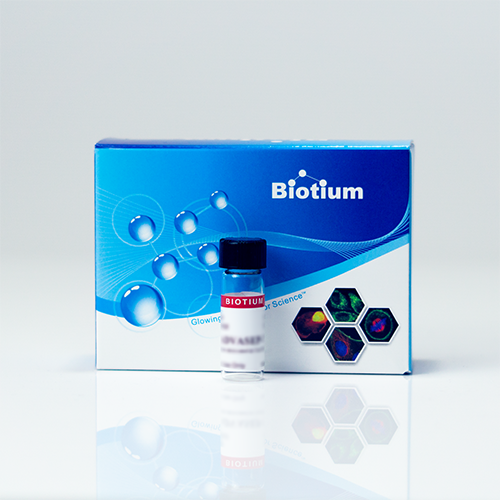Biotin-x cadaverine, free base
Biotin-X cadaverine (5-(((N-(Biotinoyl)amino)hexanoyl)amino) pentylamine, free base) can be coupled directly to activated carboxylic acid esters without the use of a base.
Wishlist updated! View wishlist
You may also like…
CF® Dye & Biotin SE Protein Labeling Kits
Kits for succinimidyl ester labeling antibodies or other proteins with Biotium's next-generation CF® dyes or biotin. 3 x 1 mg labeling reactions per kit.
Streptavidin Conjugates
A high quality biotin-binding protein conjugated to Biotium's signature bright and photostable fluorescent CF® dyes, and a selection of other labels.
CF® Dye Amine
CF® Dyes with a reactive amine group to fluorescently label carboxylic acid groups in proteins and other molecules.
DMSO, Anhydrous
Anhydrous DMSO (dimethyl sulfoxide; methyl sulfoxide) is recommended for preparing stock solutions of AM ester dyes, reactive dyes and other related moisture-sensitive products.
Biotin-12 SE
Biotin-12 SE is an amine-reactive biotin derivative with a long spacer group. It is useful for making biotin labeled nucleoside triphosphates among other applications.
EDC (EDAC)
EDC (or EDAC) (1-(3-Dimethylaminopropyl-3-ethylcarbodiimide, hydrochloride)) has recently been found to be very useful for fixing in situ chelators, including the fluorescent ion indicators for histological studies following physiological experiments. EDC is also a widely used reagent to activate carboxy groups for amine coupling.


